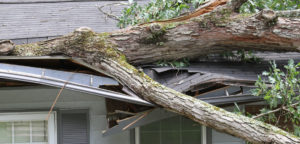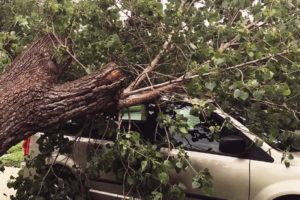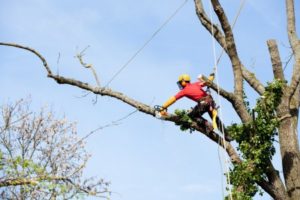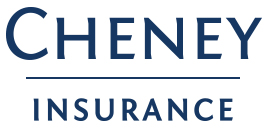
When my husband and I bought our house, one of the first investments we made was to have two very large (over 80 feet) white pine trees removed. The trees were close to the foundation and leaned precariously over the roof of our upstairs bedroom. This decision introduced us to the cost of being homeowners, however it is a decision I am thankful for even to this day as every severe windstorm had me sleeping on the couch downstairs.
Does Homeowner’s Insurance Cover Tree Damage?
There is no straight forward answer to this question. You may want to watch this short informational video which breaks down the basics.
If a tree simply falls in the backyard without damaging any structures, you would have to pick up the tab.
If a tree falls in a storm and damages your house or a detached structure, your home insurance policy generally would pay for repairs to fix the damage and to remove the tree from the structure, subject to the deductible.
Don’t count on getting reimbursed for the value of the fallen tree itself. Most insurance companies don’t cover trees because it’s difficult to value landscaping. Others cover damage to landscaping up to 5 percent of a home’s value.
Factors That May Affect a Claim
- if the tree was dying, unstable or diseased and the homeowner knew about it – this would be considered deferred maintenance and the homeowner is liable
- the tree/limb fell while the homeowner was trying to cut down the tree without professional help
Additional Scenarios
- A tree falls blocking your driveway. Typically you are covered if it blocks an emergency entrance/exit. Contact your agent to get the specifics for your policy.
- A tree blows over in a storm and damages your car in the driveway. This should be covered under your car insurance policy. The comprehensive
 portion of your policy pays for damage to your vehicle from causes other than car accidents including acts of nature, subject to the deductible.
portion of your policy pays for damage to your vehicle from causes other than car accidents including acts of nature, subject to the deductible. - A tree on your property falls and damages your neighbor’s house, shed or car. Your neighbor should file a claim under their home and/or auto insurance to determine what type of coverage is available for damage or cleanup. However, there are some cases where you could be held liable. For example, your tree was dying and your neighbor warned you about it but you took no action. Conversely, if a neighbor’s tree falls on your property and damages your house, you make a claim on your insurance policy. If you or your insurance company believe your neighbor is responsible because they created a hazard by not taking care of their trees, your insurance company might try to recover the claim cost from your neighbor’s policy.
- A tree from your yard falls into the street. This depends on your municipality, you need to contact your local town office.
The Claims Process
If a tree falls on your house, detached structure or car – make sure to take some photos. Then call your agent, who will explain your options and help you through the claims process. An adjuster will be assigned to you and it is recommended that you speak with them before you contract to have the tree removed by a licensed professional.
Preventing Tree Damage – “an ounce of prevention is worth a pound of cure”
A healthy home checkup would include assessing any risks that may be posed by trees located on your property:
- do you have any damaged/diseased trees located on your property – this greatly increases the risk of them falling
- are there trees near power lines?
- are there trees near a building or other hazard that could cause damage or injury if it falls
Proper maintenance involves regularly trimming trees. You may need to hire a licensed arborist. A professional arborist can determine if your tree needs any special treatment, pruning or complete removal. The state of Maine has a helpful guide and list of licensed arborists in our state.
It is always a good idea to speak with a Cheney Insurance agent. If you have questions about what your current policy covers, please contact us. We would love to talk with you.
